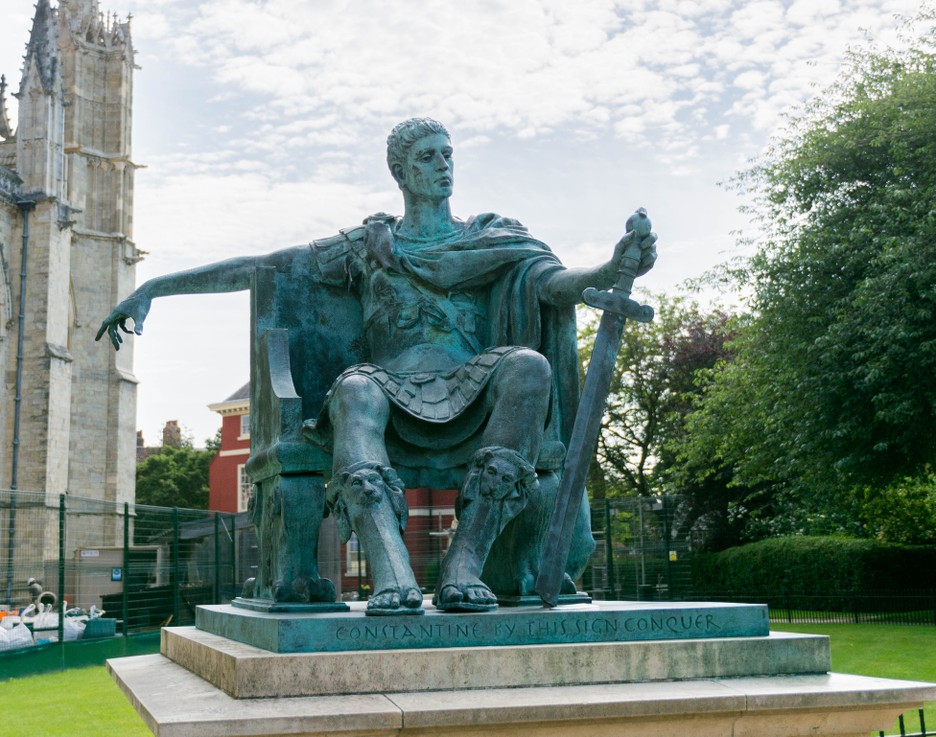
The fourth century, like the sixteenth, and perhaps our own twentieth, is one of those periods in church history when momentous changes take place that stand out as pivotal turning points in the history of God's people.
4th Century Christian History
c. 301-311 AD: Diocletian's Persecution
- Emperor Diocletian initiated a series of harsh persecutions against Christians, attempting to eradicate Christianity.
312 AD: Constantine's Conversion
- Emperor Constantine experienced a vision and converted to Christianity before the Battle of Milvian Bridge.
- He issued the Edict of Milan, granting religious tolerance to Christians.
325 AD: Council of Nicaea
- The first Ecumenical Council was convened by Emperor Constantine.
- Addresses Arianism and formulates the Nicene Creed.
330 AD: Foundation of Constantinople
- Constantine established Constantinople (modern-day Istanbul) as the new capital of the Roman Empire.
- It became a significant center for Christian influence.
c. 340-397 AD: Augustine of Hippo
- Augustine of Hippo (Saint Augustine) emerged as a prominent Christian theologian and philosopher.
- His writings significantly influence Christian doctrine.
380 AD: Edict of Thessalonica (Cunctos populous)
- Emperor Theodosius I declared Nicene Christianity the official state religion of the Roman Empire.
381 AD: First Council of Constantinople
- Second Ecumenical Council.
- It confirms the Nicene Creed and addresses various theological issues.
386 AD: Augustine's Conversion
- Augustine converted to Christianity and became Bishop of Hippo.
- His theological writings continue to shape Christian thought.
391 AD: Christianity as the State Religion
- Theodosius I officially banned pagan practices and established Christianity as the sole state religion.
395 AD: Division of the Roman Empire
- The Roman Empire was divided into the Eastern Roman Empire (Byzantine Empire) and the Western Roman Empire.
397 AD: Formation of the New Testament
- The Councils of Hippo and Carthage confirmed the canon of the New Testament, finalizing the list of accepted books.
Late 4th Century: Spread of Christianity
- Christianity became the dominant religion throughout the Roman Empire.
The century witnessed major changes and transitions in church relations with the state and society. Here are six:
• Empire Persecutes Church -- At the beginning of the century, the church went through the "Great Persecution"--the last and the worst. Instituted by emperor Diocletian in 305, it was intended to wipe out the church. It failed.
• Empire Tolerates Church -- Emperor Constantine professed Christianity, giving the church legal status. You will often hear that Constantine made Christianity the empire's official religion. He didn't. But he did restore its losses and gave it favored treatment as one among many tolerated religions.
• Empire Challenges Church -- Paganism didn't give up without a battle. Emperor Julian (361-363) attempted unsuccessfully to reestablish paganism.
• Empire Adopts Church -- Christianity was officially made the state religion under emperor Theodosius IX in the year 381.
• Church Challenges Empire -- In a dramatic confrontation that foreshadowed centuries of church-state jockeying for position, Bishop Ambrose of Milan defied the emperor.
• Church Persecutes Opponents -- It started off the century as a persecuted minority. By the end of the century, the persecuted church had become a persecuting church. Its motives made sense. It saw itself as combating heresy, false religion, and evil forces. In many ways, it was a different church and a different world at the end of this century.
• Canon of New Testament confirmed. In the 367 AD Easter letter of Athanasius, and at Councils in 382 and 397, final recognition was given. These do not create the Christian scriptures but confirm what was already generally recognized and accepted.
• Millions of new members pour in. Becoming a Christian is no longer a risk, but can even be politically and socially opportune, so the church has to deal with a new laxity in standards of belief and behavior.
• Persecuted Church turns into persecuting church. By the end of the century, the church that had for so long endured persecution as a minority faith had now become state-sanctioned.
• Major Councils - Church now needs to clarify and define what it believes. A long time was required to understand and explain the Person and Nature of Christ. Under Emperor Constantine, the first major council of the church was held in Nicea (modern Turkey) in 325. The second major Council was held at Constantinople in AD 381.
• Donatists Arise in 311 - No sooner does the church achieve toleration than a severe rupture occurs within the North African church that would continue for three hundred years. What had been one of the strongest early centers of the church was so weakened it was eventually lost to Christianity.
• Major Missionary Advance as Ufilias takes Gospel to the Barbarian Goths in mid-century.
• Church Buildings Flourish -- After legalization, the church gets big into real estate. Often its great basilicas are built on the sites of what were formerly pagan temples.
• Capital of Empire moves to Constantinople -- In 324 city founded. The city was dedicated on May 11, 330. Rome was no longer the center of power for the empire, and the church began to fill in the gap at Rome.
• Eusebius' Church History -- Bishop Eusebius of Caesarea becomes the first significant church historian and gives us invaluable documentation on the early church.
• Augustine converted in AD 386. He would become one of the most important theologians in all of church history.
Photo credit: Getty/Riverheron








